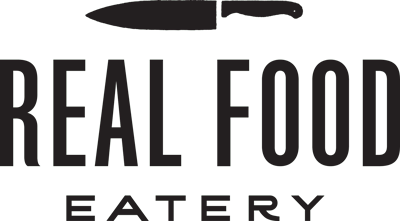Health Hack #14 - Be Careful What You Wash With!
Why is there a photo of processed foods at the top of an article about soap?
The craft of heavily processing foods was born of three objectives:
-Extending shelf life
-Reducing costs
-Enhancing flavor and aesthetic appeal
Most of us know this, at least on some level. Maybe you’ve never thought it through, but if given a multiple choice selection of answers to the question of why extreme processing became a staple in Western food production, these three characteristics would seem most logical. But what may surprise many is that soaps have largely followed this same path.
Sadly, most of our modern day hand washes, shower soaps, shampoos, and other cleaning agents that we use on ourselves contain suspect ingredients, and many contain agents that are downright dangerous. These additives serve the same purposes as described above in regards to highly processed foods: preservatives that extend the lifespan of a product, synthetic ingredients that supplant real ones in efforts to reduce costs, and supplements that enhance scent and in some cases color. Let’s hone in on what to look out for when reading your next soap label.
The Primary Culprits
Parabens
Parabens receive the most hype within the clean soap movement, and for good reason. They’re often tricky to detect, because you’re not going to see “Parabens” listed on soap labels. Instead, you’re bound to find types of parabens with long, tough to pronounce names. But fortunately the scientific name will usually contain “paraben” within it: methylparaben, propylparaben, to name the more ubiquitous offenders. Parabens are known to disrupt hormone function by mimicking estrogen. Estrogen is a “Known Carcinogen”, linked to increased risk of breast cancer and reproductive toxicity. This is clearly worrisome for women. But men, too, have reason for concern. It’s vital for male virility that testosterone remain balanced with estrogen, and that testosterone not be too low. Increased estrogen intake works to reduce testosterone. Parabens are found in virtually all products we use to clean ourselves: soap bars, body gels, shampoos, deodorants, etc. Definitely be on the lookout.
Dioxane (often labeled as “1,4 Dioxane")
California has proposed that this chemical be deemed a carcinogen, based on scientific research suggesting that this is true. It has a relatively high Hazard Rating (link: here). It’s cited to tamper with reproductive health and is a known respiratory toxin. Dioxane is found mostly in shower gels, dish detergents, and body lotions.
Sodium Lauryl Sulfate (aka Sodium Laureth Sulfate)
When bound with other traditional soap ingredients, “SLS” (as it’s often labeled), nitrosamine is formed. Nitrosamine is also in legislation to be deemed a carcinogen in California, and SLS itself is a known dermatological irritant.
Ureas
Like Parabens, “Ureas” won’t appear solo on a label. Instead, you’ll find types of them. Diazolidinyl Urea is very common (unfortunately) and is a known precursor to Formaldehyde. I think most readers will recognize that ingesting Formaldehyde probably isn’t a good thing. It’s important to keep in mind that our pores are able to absorb the soaps, oils, and lotions that we apply to our bodies, so it’s not as though these products merely kill germs, make us smell better, and then wash away. We carry traces of them around with us, long after our shower is complete.
Triclosan
Also carrying a questionable Hazard Rating (link: here), Triclosan has the ability to wreak havoc on the endocrine system, via stunting concentrations of our thyroid function. This chemical is found most abundantly in facial cleaners.
To be perfectly honest, it can be very difficult to wade these waters. One trick is to be wary of ingredients you can barely pronounce. Another is to remain cautious of the quantity of ingredients, particularly when there are words interspersed that you don’t necessarily recognize. If a label is the equivalent of a 100 word paragraph then it’s likely that something foul is included. On the flipside, one can be on the lookout for positive disclaimers. “Paraben free” is a great starting point. “Organic”, “Fair Trade”, “No synthetic preservatives” are others that will at least work to mitigate adverse effects if accompanied by other questionable ingredients, and are generally indicative of overall integrity. “All natural” can be taken as an easy, all encompassing description. Essential oils are extracted directly from plant material, earning them the rightful classification of natural. When you encounter an “all natural” soap label, the implication is generally that it's comprised primarily of essential oils. Likewise, labels that tout essential oils are more likely to contain quality ingredients. These products may not necessarily be chemical-free (unless advertised), but they’re bound to contain less egregious ones.
|
